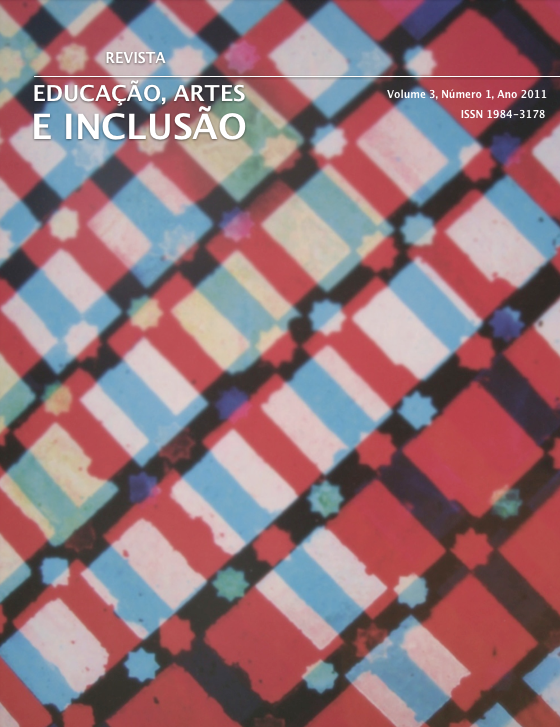DANÇA, A QUEM CORRESPONDE NA ESCOLA: A EDUCAÇÃO FÍSICA OU AO ENSINO DE ARTE?
Palabras clave:
escola, dança, educação físicaResumen
Este artigo vem a somar com as reflexões já existentes a respeito do ensino da dança na escola, se a mesma deva estar na educação física ou no ensino da arte. Acreditando ser mais um elemento que possa contribuir com esta linha de pensamento nas discussões que hora se acercam a este tema, este artigo é fruto de um estudo bibliográfico embasado em autores que vem defendendo a presença do ensino da dança quer seja na educação física em escola, ou no ensino superior. Entendendo ser a educação física uma disciplina que abarca os temas da cultural corporal e a dança como parte da expressão da linguagem corporal, considera-se que a dança faz parte da área de conhecimento Educação Física. Sendo a dança uma das quatro linguagens da Arte (teatro, artes visuais, música e dança) como articula os Parâmetros Curriculares em Arte e contida nos Parâmetros Curriculares da Educação Física disciplinas obrigatória na educação básica segundo a Lei 9394/96 das Diretrizes e Bases da Educação – LDB; vem se instalando um mal-estar entre os profissionais destas duas áreas. Faz-se então necessário a continuação de estudos e pesquisas a este respeito para maiores esclarecimentos.Descargas
Descargas
Publicado
Cómo citar
Número
Sección
Licencia
Declaración de Derecho de Autor
Los autores que publican en esta revista concuerdan con los siguientes términos:
(A) Autores mantiene los derechos de autor y concede a la revista el derecho de primera publicación, con el trabajo simultáneamente licenciado bajo la Licencia Creative Commons Attribution que permite el compartir el trabajo con reconocimiento de la autoría y publicación inicial en esta revista.
(B) Autores tienen autorización para asumir contratos adicionales por separado, para distribución no exclusiva de la versión del trabajo publicada en esta revista (por ejemplo, publicar en repositorio institucional o como capítulo de libro), con reconocimiento de autoría y publicación inicial en esta revista.
(C) Esta revista proporciona acceso público a todo su contenido, ya que esto permite una mayor visibilidad y alcance de los artículos y reseñas publicadas. Para obtener más información acerca de este enfoque, visite el Public Knowledge Project.
Esta revista tiene una licencia Creative Commons Attribution-NonCommercial 4.0 International. Esta licencia permite que otros remezclen, modifiquen y desarrollen su trabajo con fines no comerciales, y aunque los trabajos nuevos deben acreditarlo y no pueden usarse comercialmente, los usuarios no están obligados a licenciar estos trabajos derivados bajo los mismos términos.





